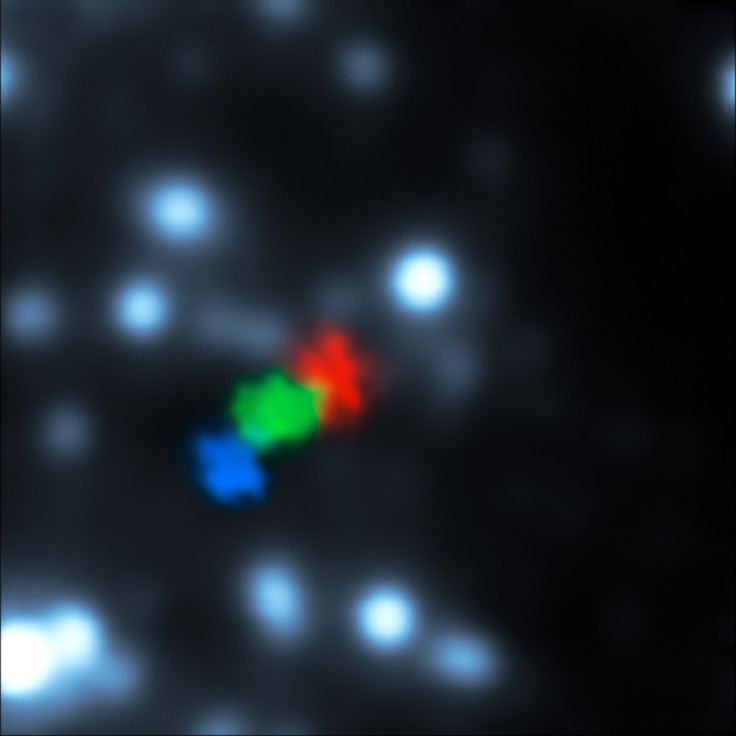Massive Gas Cloud Being Torn Apart By Black Hole At Center Of Milky Way Galaxy [PHOTO]
Astronomers are currently watching a gas cloud, several times the mass of Earth, being “ripped” apart by the black hole that sits at the center of the Milky Way galaxy. The majority of the gas cloud has escaped from the black hole’s gravitational pull, but the tail continues to be stretched by the extreme gravity.

Astronomers using European Southern Observatory’s Very Large Telescope have been watching the event with rapt attention since 2011. Astronomers first observed the gas cloud speeding toward the center of the Milky Way, and its supermassive black hole, and they have been watching closely as the cloud traveled dangerously close to the black hole. According to the ESO press release, the gas cloud is making its closest approach to the black hole and at just 25 billion kilometers was perilously close to falling in due to the extreme gravity.
As ESO notes, the distance between the gas cloud and the black hole is five times the distance between Neptune and the sun. But considering the incredible mass of the black hole, approximately 5 million times the mass of the sun, there was a chance the cloud could not escape the gravitational pull and fallen into the black hole. While the cloud did not fall in, it has become incredibly stretched by its close call with Sgr A*, Sagittarius A-star, to the point it resembles “spaghetti."
Team leader Stefan Gillessen, from the Max Planck Institute for Extraterrestrial Physics in Germany, said, “The gas at the head of the cloud is now stretched over more than 160 billion kilometers around the closest point of the orbit to the black hole.” The astronomers were able to observe the event by training VLT’s SINFONI instrument onto the area around the black hole for 20 hours. The gas cloud was incredibly faint, and researchers had to use an integral field spectrometer that allowed them to map out each pixel’s individual spectra. In the image, created from photos collected in 2006, 2009 and 2013, the space cloud being pulled apart was captured in the blue, green and red in the infrared spectrum.
Based on the different colors, the astronomers were able to determine the speeds of the different sections of the space cloud, and, using these observations, the team was able to determine where the cloud was traveling from and where various parts of the cloud are in its orbit around the black hole.

According to Reinhard Genzel, an astronomer researching the area around the black hole for two decades, the observations indicate the front of the cloud has already made its closest orbit around the black hole and heading away from Sgr A*. Gillessen believes the gas cloud is unlikely to contain a star, saying, “Like an unfortunate astronaut in a science fiction film, we see that the cloud is now being stretched so much that it resembles spaghetti. This means that it probably doesn’t have a star in it.” As for the gas cloud’s origin, Gillessen believes it was formed from the stars orbiting near the black hole, ESO reports.
For astronomers, the space cloud’s journey around the black hole can lead to new observations of the area around the black hole, the cloud itself and the effects of the extreme gravity. A video simulation of the event, courtesy of ESO, can be viewed below.
© Copyright IBTimes 2024. All rights reserved.






















